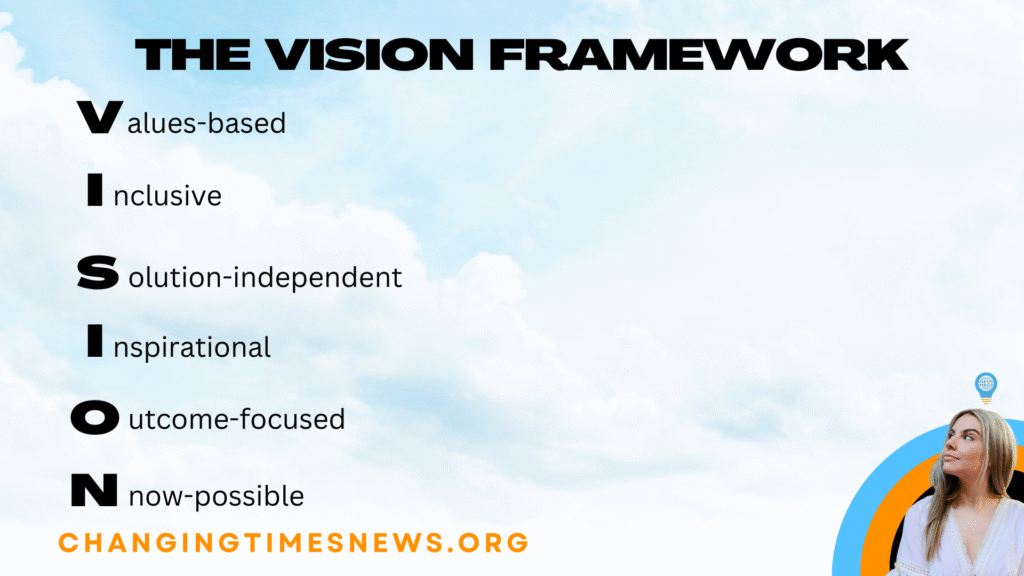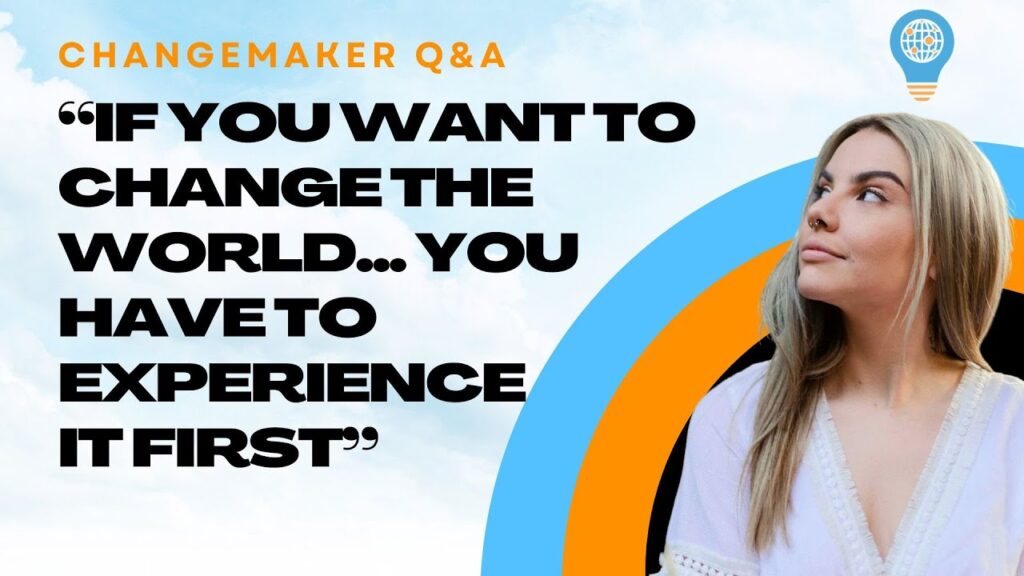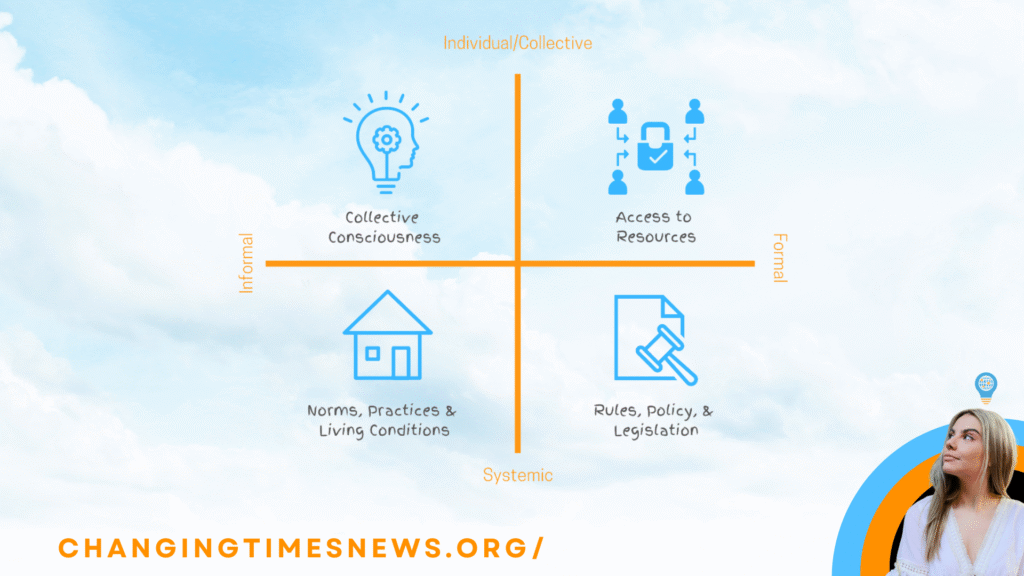When it comes to driving meaningful change—whether inside large organizations, grassroots movements, or international development projects—having a clear, collective vision is often the missing piece. In the latest episode of Changemaker Q&A, I unpack a framework I developed through my PhD research that helps leaders and communities build stronger, more inclusive visions for the future. It’s called the VISION framework—and it’s designed to turn abstract ideals into what I describe as a “concrete utopia.”
Why Vision Matters
Social change work often starts from a recognition of problems—inequality, environmental breakdown, disempowerment—but problem-solving alone doesn’t create the conditions for lasting transformation. As strategy experts at the Harvard Kennedy School note, visions act as a “North Star” for organizations, offering both direction and purpose while clarifying which challenges must be addressed to move forward (Harvard Kennedy School).
Without a shared vision, stakeholders can end up pulling in different directions. Worse, visions can be watered down into vague statements that sound good but lack meaning. The VISION framework is a response to this challenge, offering a structured way for groups to co-create futures that are bold, inclusive, and actionable.
The VISION Framework Explained
VISION is an acronym for six guiding principles:
- Values-based – Grounding visions in ethics and core values, rather than metrics alone.
- Inclusive – Ensuring no group is excluded, and that visions foster unity rather than division.
- Solution-independent – Describing the future we want, not prescribing how to get there.
- Inspirational – Focusing on what we do want, not just what we oppose.
- Outcome-focused – Keeping attention on the end goal rather than current barriers.
- Now possible – Ambitious yet achievable with today’s tools and resources.
By filtering individual ideas through these principles, groups can bring seemingly divergent perspectives into alignment. This helps avoid the pitfalls of what I call “abstract utopias”—visions so vague or diluted that no one feels truly represented. Instead, the framework aims to produce “concrete utopias”: collective futures where every stakeholder can recognize their own aspirations reflected.

From Theory to Practice
The framework has practical applications across sectors. For example, I am currently using it with the New Economy Network Australia (NENA), where more than 60 members contributed their visions for a fairer, more sustainable economy. Through the VISION framework, those diverse submissions are being synthesized into a single guiding vision for the organization’s strategic direction.
Internationally, similar participatory approaches have proven effective. Research published in the Journal of Applied Behavioral Science emphasizes that inclusive visioning processes build stronger stakeholder commitment and reduce conflict when setting strategy (Sage Journals).
Towards Concrete Utopias
The idea of “concrete utopia” is rooted in political philosophy, drawing inspiration from thinkers such as Ernst Bloch, who argued that collective hope should be grounded in realistic possibilities rather than abstract ideals. In the context of changemaking, this means crafting visions that are both imaginative and materially possible.
As movements for climate justice, social equity, and systemic reform continue to grow worldwide, tools like the VISION framework offer a way to align diverse stakeholders without diluting their aspirations. The ultimate goal is a vision that every participant can look at and say: “Yes—that’s the future I want to build.”


